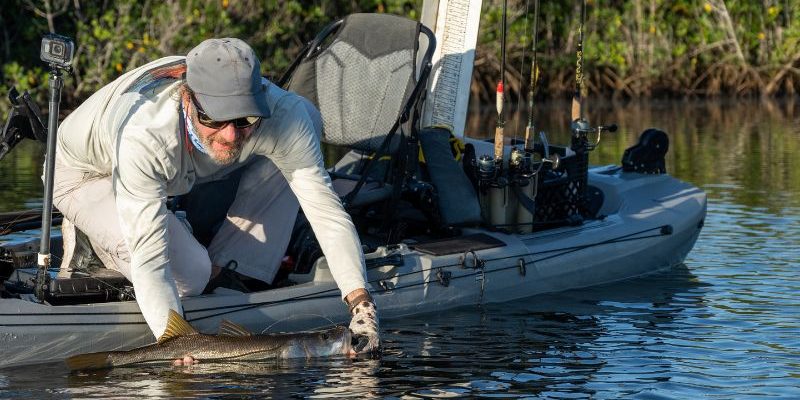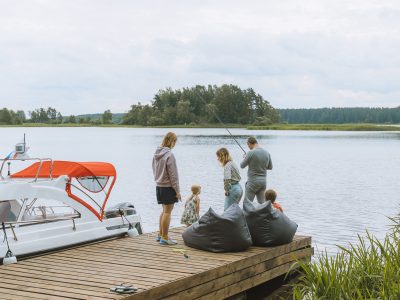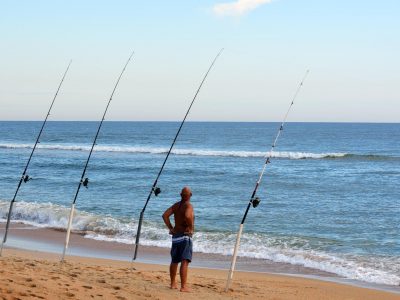As the temperatures start to dip and the days grow shorter, Florida’s waters come alive with some of the year’s best fishing opportunities. Fall is an excellent time for anglers, offering a unique mix of active and biting species across the state.
Whether you’re a seasoned angler or just getting started, here’s what you need to know about what’s biting in Florida this fall season, along with some useful tips and tricks to make the most of your fishing adventure.
Fall Fishing in Florida: What to Expect
Fall fishing in Florida often attracts a mix of both local and visiting anglers. This can lead to increased competition for prime fishing spots, especially on weekends and holidays. However, the overall atmosphere is typically friendly and welcoming.
Fall is a transitional season, which can influence fish’s activity. Here are some general trends to expect:
- Increased Feeding Activity: Many fish species are more active and feeding more frequently as they prepare for winter. This can lead to increased catch rates.
- Seasonal Migrations: Some fish species, such as kingfish and mullet, may migrate closer to shore in the fall, providing new opportunities for anglers.
- Changing Water Temperatures: Cooler temperatures can affect fish behavior. Some species may move to deeper waters or become less active, while others may thrive in the cooler conditions.
Top Species to Target This Fall
1. Redfish (Red Drum)

Redfish are one of the most sought-after species in Florida during the fall. Known for their hard fight and delicious taste, redfish are abundant in the shallows and can be found around oyster bars, mangroves, and grass flats.
The St. Johns River near Mayport (Jacksonville) and the Salt River near St. Augustine offer excellent opportunities for catching large redfish in September and October.
Best Time to Catch: Early morning and late afternoon when the tides are moving.
Tips: Use live shrimp or crab as bait, and fish near structures like docks or mangroves where redfish like to hide. During fall, they often travel in schools, so once you find one, there’s a good chance you’ll find more.
2. Snook

Snook are another popular species in Florida’s fall fishing season. These aggressive predators can be found in both inshore and nearshore waters, particularly around bridges, piers, and inlets.
The Banana River Lagoon around Merritt Island and Cocoa Beach is a popular spot for sea trout and snook, with shallow flats and mangrove swamps providing ideal habitat.
Best Time to Catch: Snook are most active at dawn and dusk.
Tips: Use artificial lures that mimic small fish or shrimp, and focus on areas with strong currents. Snook are known for their explosive strikes, so be prepared for a fight when you hook one. Remember that snook are catch-and-release only in some areas during the fall, so check local regulations before you go.
3. Kingfish (King Mackerel)
For those venturing offshore, kingfish are a top target in the fall. These fast swimmers are known for their powerful runs and are often found around reefs, wrecks, and along the coast.

Kingfish come close to shore and pier fisherman can benefit from the fall run when bait schools come close to shore. In fact, the fall is a great time for catching fish off the various piers.
Best Time to Catch: Midday when the sun is high, and the water is warmer.
Tips: Drift with live bait like menhaden or mullet to attract kingfish. They are often found in schools, so once you hook one, others are likely nearby. Use a wire leader to prevent these sharp-toothed predators from cutting your line.
Trolling with drone spoons is also an excellent way to catch kingfish.
4. Grouper
Grouper fishing heats up in the fall as these bottom-dwelling fish become more active in cooler waters. Gag grouper, in particular, are a popular target off the coast of Florida.

The Islamorada Reef Tract: This extensive reef system stretches from Islamorada to Key Largo and is home to a variety of grouper species. The John Pennekamp Coral Reef State Park is also a popular destination for grouper fishing. It protects the third-largest barrier reef in the world.
Best Time to Catch: Grouper are typically more active during the day.
Tips: Use heavy tackle and live bait such as pinfish or squid. Grouper are strong fighters that like to retreat into rocky crevices, so be ready to reel them in quickly. Focus on areas with underwater structures like reefs and wrecks where grouper like to hide.
Tips and Tricks for Successful Fall Fishing
- Inspect and Maintain Your Equipment: Before heading out, it’s crucial to inspect all your fishing gear for any signs of wear or damage.
- Check rods and reels for smooth operation, ensuring that there are no cracks or excessive wear on the guides.
- Replace any frayed lines and consider spooling your reels with fresh line; this is particularly important as fish often become more line-shy in cooler waters.
- Pay special attention to your knots, ensuring they are secure and suitable for the species you are targeting.
- Pay Attention to the Tides: Tides play a crucial role in fishing success. Fish are generally more active during moving tides, so plan your trips around high and low tide changes. Falling tides are often the most productive in the fall, as they stir up baitfish and attract predators.
- Match the Hatch: Fall is a time of plenty in Florida’s waters, with various baitfish species in abundance.
- Use lures and baits that mimic the local forage to increase your chances of success. If you see schools of baitfish in the area, try using similar-sized lures.
- With the changing seasons, so too does the availability of natural bait.
- Shift your bait selection to reflect what is prevalent in the waters during fall. Live shrimp, finger mullet, and soft plastics in natural colours tend to be highly effective.
- Select the Right Tackle: Adjusting your tackle setup for fall fishing can significantly influence your success.
- Consider using lighter tackle, which allows for better sensitivity and control in cooler conditions. This setup helps detect subtle bites that are common in the fall as fish may become less aggressive.
- Additionally, select hooks that are appropriate for the bait you plan to use; smaller, sharper hooks can increase your hook-up ratio.
- Gear Up for the Fight: Many of the species active in the fall, like snook and kingfish, are known for their powerful runs. Make sure your gear is up to the task.
- Use a strong leader and be prepared for a battle when you hook one of these hard-fighting fish.
- Invest in waterproof gear and ensure you have proper clothing suited for cooler temperatures, including layers that can be added or removed as needed.
- Pack additional essentials such as sunscreen, insect repellent, and a first aid kit to keep your experience safe and comfortable.
- Be Weather-Wise: Fall weather in Florida can be unpredictable, with sudden changes in wind and rain. Keep an eye on the forecast and be prepared to adjust your plans accordingly. A windy day can be great for inshore fishing, as it stirs up the water and makes fish more active.
- Respect the Regulations: Florida has strict regulations to ensure sustainable fishing practices. Always check the latest rules for size limits, bag limits, and closed seasons before heading out. This is especially important for species like snook and grouper, which have specific seasonal restrictions.
- Download FishVerify to get the latest fishing information and regulations for your location.

Fall is a fantastic time to explore Florida’s diverse fishing opportunities. With cooler weather, active fish, and beautiful scenery, there’s no better time to get out on the water. Whether you’re targeting redfish in the shallows or trolling for kingfish offshore, the fall season offers something for every angler.
Remember to plan your trips around the tides, use the right gear, and follow local regulations to ensure a successful and enjoyable fishing experience.
Happy fall angling!


